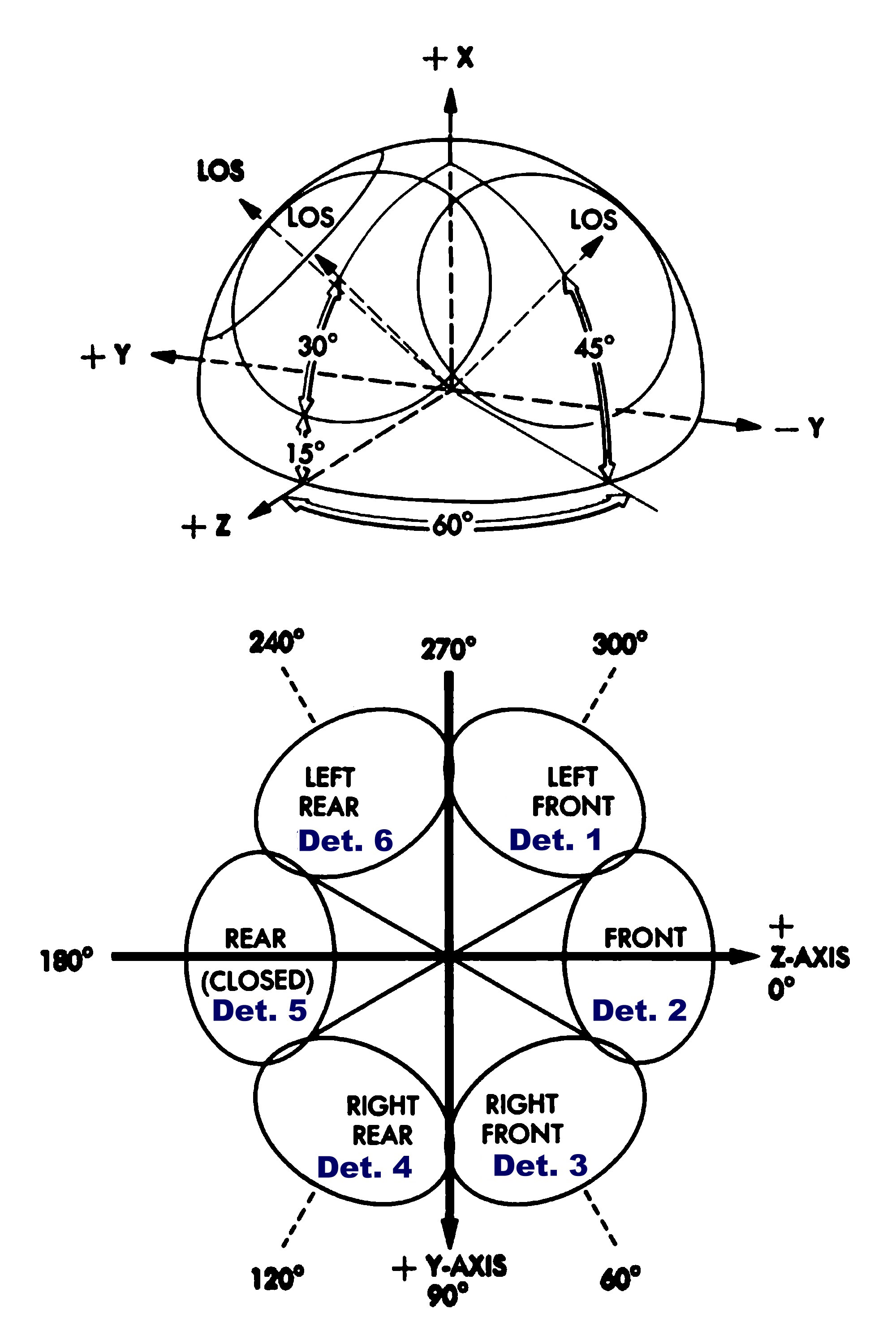 Position to the six fields-of-view,
relative to the spacecraft axes.
Each field-of-view is conical with a
width of 60 degrees.
Position to the six fields-of-view,
relative to the spacecraft axes.
Each field-of-view is conical with a
width of 60 degrees.
Selected Uses of the AOT
In the transcripts and checklists, the
detents are often referred to by number, from 1 to 6.
Computation of the lunar azimuth and elevation of the star used in a
particular instance can be used together with the known LM yaw with
respect to down-Sun to calculate location in the Y-Z plane
relative to plus-Z. That, in turns lets us identify the
corresponding detent and match the numerical designation with the
positional (front, right front, etc.) The result is that
left-front detent - usually referred to as 'left' in the transcripts -
is detent No. 1; 'front' = 2; and so on, clockwise around to
'left-rear' = 6. These identifications have been added to the
diagram above. Note that the Sun-facing, rear detent (No. 5) was
not used, except as a stowage position.
Mission
|
Reported
LM Orientation
|
GET
|
UTC
|
Star
|
Lunar
El/Az
|
Detent
|
Pitch
|
Roll
|
Yaw
|
LM plus-Z Azmth
|
hh:mm
|
dd/mm/yy
|
|
El.
|
Azmth
|
Angle from plus-Z
|
Planned
|
Used
|
| Apollo 11 |
4 |
0 |
-13 |
257 |
103:22:54
|
22:14
|
20/07/69
|
Rigel
|
43
|
133
|
236
|
6
|
6
|
|
|
|
|
|
|
|
|
Capella
|
43
|
56
|
159
|
4
|
|
|
|
|
|
|
|
|
|
Navi
|
42
|
2
|
105
|
|
4
|
|
|
|
|
|
122:17:10
|
15:49
|
21/07/69
|
Capella
|
51
|
50
|
153
|
|
4
|
|
|
|
|
|
|
|
|
|
|
|
|
|
|
Apollo 12
|
-3
|
-1.4
|
10
|
280
|
110:56:00
|
07:18
|
19/11/69
|
Sirius
|
35
|
225
|
-55 (305)
|
1
|
1
|
|
|
|
|
|
111:06:44
|
07:29
|
19/11/69
|
Pollux
|
50
|
287
|
7
|
2
|
2
|
|
|
|
|
|
|
|
|
|
|
|
|
|
|
Apollo 16
|
2.5
|
0
|
0
|
270
|
104:59:14
|
02:53
|
21/04/72
|
Altair
|
52
|
339
|
69
|
3
|
3
|


